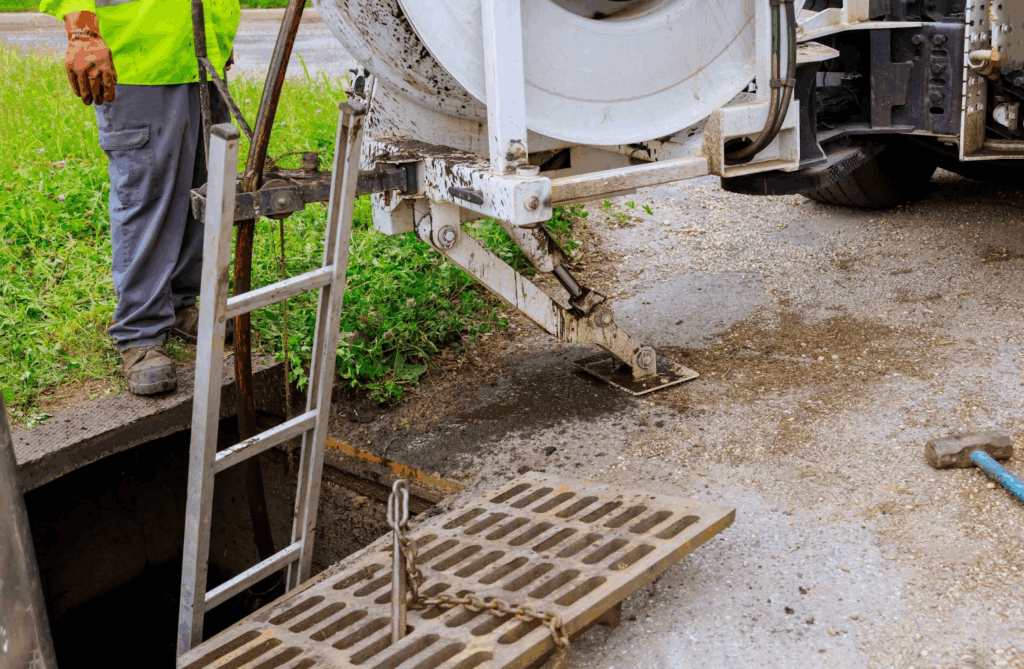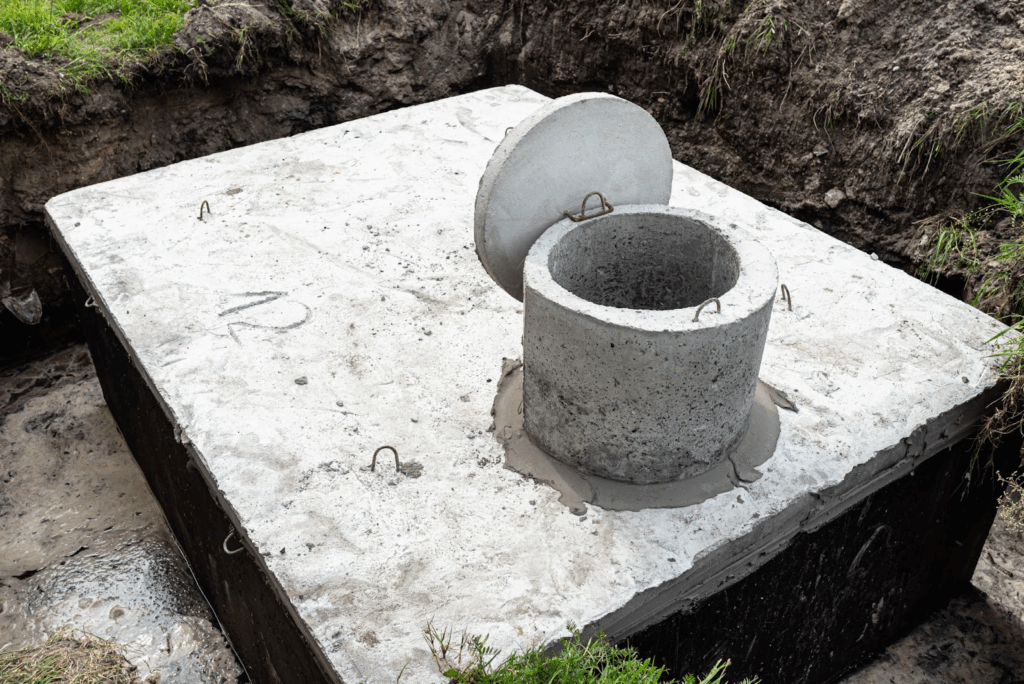Septic tanks are an essential part of homes without city sewer connections. They collect and treat wastewater, keeping plumbing systems functional. These systems can become clogged and overflow without regular maintenance, leading to costly damage. Knowing how often to pump a septic tank helps homeowners avoid unpleasant surprises and expensive repairs.
Why Do Septic Tanks Need to Be Pumped?
Regular septic tank pumping is crucial for maintaining a functional and efficient system. Over time, solid waste accumulates, reducing the tank’s capacity and leading to potential failures. Proper maintenance prevents blockages, protects the environment, and ensures a longer lifespan for the system. Homeowners who stay on top of septic tank care avoid costly repairs and health hazards.
Factors Affecting Septic Tank Pumping Frequency
Several factors determine how often a septic tank needs to be pumped. Understanding these factors helps homeowners maintain an efficient system and prevent problems. Knowing how each factor impacts maintenance needs helps homeowners avoid unexpected issues:
Household Size
The number of people living in a home impacts septic tank usage. More residents mean more wastewater and solid waste entering the system daily. A single-person household may go longer between pumpings, while a family of four or more will fill the tank much faster. Larger households should check their septic tanks regularly to ensure they do not overload. Proper maintenance prevents system failure and keeps plumbing in good condition.
Tank Capacity
Septic tanks come in various sizes, and capacity plays a crucial role in determining the pumping schedule. Smaller tanks fill up quickly and require more frequent maintenance. Homes with large tanks may have extended grace periods between pumpings. However, even a big tank can fill up fast if the household produces a lot of waste. Regular inspections help determine when pumping is necessary based on tank size and usage.
Water Usage
Excessive water usage strains a septic system and accelerates the need for pumping. Frequent showers, multiple laundry loads, and continuous dishwashing can cause the tank to fill up faster. Water conservation habits, such as fixing leaks and using high-efficiency appliances, help extend the time between pumpings. Limiting unnecessary water waste ensures that the septic system operates efficiently. Keeping water usage in check prevents overflow and prolongs the system’s lifespan.
Garbage Disposal Usage
Garbage disposals increase the amount of solid waste entering a septic system. Food scraps, grease, and other debris can build up inside the tank and reduce capacity. Households that use garbage disposals frequently should expect to pump their tanks more often. To minimize the impact, homeowners should avoid disposing of large amounts of food waste down the drain. Using composting or trash disposal methods can help reduce septic system strain.
Signs Your Septic Tanks Need to Be Pumped
A septic tank does not always show signs of being full, but certain indicators can help determine when maintenance is due. Ignoring these warning signs can lead to severe system failure and expensive repairs. Addressing these signs as early as possible can prevent costly issues and keep the system functioning correctly:
Slow Drains
One of the first signs of a full septic tank is slow-draining sinks, bathtubs, and toilets. When the tank nears capacity, wastewater struggles to flow freely through the plumbing system. Drains may take longer than usual to clear, and blockages can become frequent. If multiple drains in the home start draining slowly simultaneously, it strongly indicates that the septic tank needs pumping. Delaying service can lead to complete clogs and backups.

Gurgling Noises
Strange gurgling sounds coming from the pipes may indicate a septic system issue. These noises occur when air gets trapped in the plumbing due to waste buildup. As water flows through partially clogged pipes, it displaces trapped air, creating bubbling sounds. Persistent gurgling noises suggest that the tank is nearly full and wastewater is struggling to pass through. Ignoring this sign can lead to more severe plumbing issues, including blockages and backups.
Unpleasant Odors
Foul odors around the septic tank area or inside the home can signal a potential problem. When waste accumulates beyond the tank’s capacity, gases escape through drains and the surrounding ground. A persistent sewage smell near sinks, toilets, or the yard means the system is overloaded. Septic odors are not just unpleasant but can also pose health risks. Pumping the tank eliminates the smell and restores the system’s efficiency.
Sewage Backup
A clear sign of an overfilled septic tank is sewage backing into sinks, bathtubs, or toilets as the system struggles to direct waste to the sewer or drain field. When a tank is full, waste has nowhere to go and starts flowing back into the home. Backups are hazardous, as they expose residents to harmful bacteria and contamination. If sewage backup occurs, immediate pumping is required to prevent further damage. Regular maintenance reduces the risk of waste backing up into the house.
Lush Grass Growth
An unusually green and thriving lawn above the septic tank area can indicate a leak or overflow. When a septic tank reaches capacity, excess liquid may seep into the surrounding soil. This waste is a fertilizer, causing the grass to grow more rapidly and appear lusher than the rest of the yard. While this may seem beneficial for landscaping, it often signals that the septic system is failing. Homeowners should investigate any unexpected grass growth near the tank and schedule an inspection if necessary.
When Do Septic Tanks Need to Be Pumped?
Septic tanks require routine maintenance to prevent breakdowns. While the general rule is to pump every three to five years, some households need service more frequently. The proper schedule depends on waste levels, household habits, and the condition of the septic system. Professional evaluations help determine when pumping is necessary.
How Professionals Determine the Right Pumping Time
Plumbers use multiple methods to assess whether a septic tank needs pumping. They measure the sludge and scum layers inside the tank to ensure proper waste breakdown. If these layers exceed recommended levels, pumping is required. Inspections also include checking for cracks, leaks, and blockages. Evaluating household water usage and waste production helps experts provide a customized maintenance schedule.

When a Septic Tank Needs to Be Pumped Without Inspection
Determining when a septic tank needs pumping without an inspection can save homeowners time and money. While professional assessments provide the most accurate results, there are simple ways to gauge if maintenance is needed. Monitoring daily water use and observing changes in plumbing performance can help identify potential issues. Understanding these signs ensures that septic systems receive timely care and avoid unnecessary pumping:
Fluctuating Water Levels in Toilets and Drains
Fluctuating water levels in toilets and slow-draining sinks can indicate a full septic tank. The system may struggle if toilets refill inconsistently or water rises higher than usual before draining. Drains that suddenly gurgle or bubble also suggest wastewater has trouble flowing correctly. These early signs help homeowners recognize when their septic tank is nearing capacity. Promptly addressing these issues prevents backups and costly damage.
Standing Water or Muddy Soil Near the Drain
A septic system should efficiently absorb and filter wastewater. If puddles of water or overly saturated soil appear near the drain field, it may signal an overflowing tank. Wastewater that cannot correctly drain will rise to the surface, creating damp or foul-smelling areas. Persistent sogginess in the yard, especially without recent rainfall, suggests a septic system issue. These warning signs indicate that the tank should be pumped soon to prevent environmental contamination.
Sewage Smell From Drains or the Yard
Unpleasant odors from sinks, showers, or the yard often indicate a septic system needing pumping. A strong sewage smell indicates that waste gases are not properly contained within the tank. When a septic tank becomes too full, these gases escape through drain pipes or the surrounding soil. Ignoring these odors can lead to more significant problems, like waste overflow. Scheduling a pump-out as soon as odors appear helps maintain system efficiency.
Five Years or More Since the Last Pumping Date
One of the simplest ways to determine if a septic tank needs pumping is by checking past maintenance records. Pumping is likely necessary if it has been more than three to five years since the last service. Households with higher water usage may need maintenance sooner. Keeping a record of previous pump-outs helps homeowners stick to a consistent schedule. A proactive approach ensures the septic system remains functional without unnecessary delays
Schedule Your Septic Tank Pumping for a Worry-Free Home
Your septic tank works silently every day, managing waste and keeping your home functional. But just like any system, it needs care to keep working efficiently. Ignoring maintenance isn’t just a risk—it’s a gamble with your home’s safety, your family’s health, and your wallet. A well-maintained septic system isn’t just about avoiding problems; it’s about ensuring peace of mind, year after year. Don’t wait until disaster strikes—schedule your septic tank pumping today and protect what matters most.
Septic maintenance made easy! Visit Castaneda’s Plumbing and Rooter blog for expert tips and must-know advice to keep your system in top shape.

